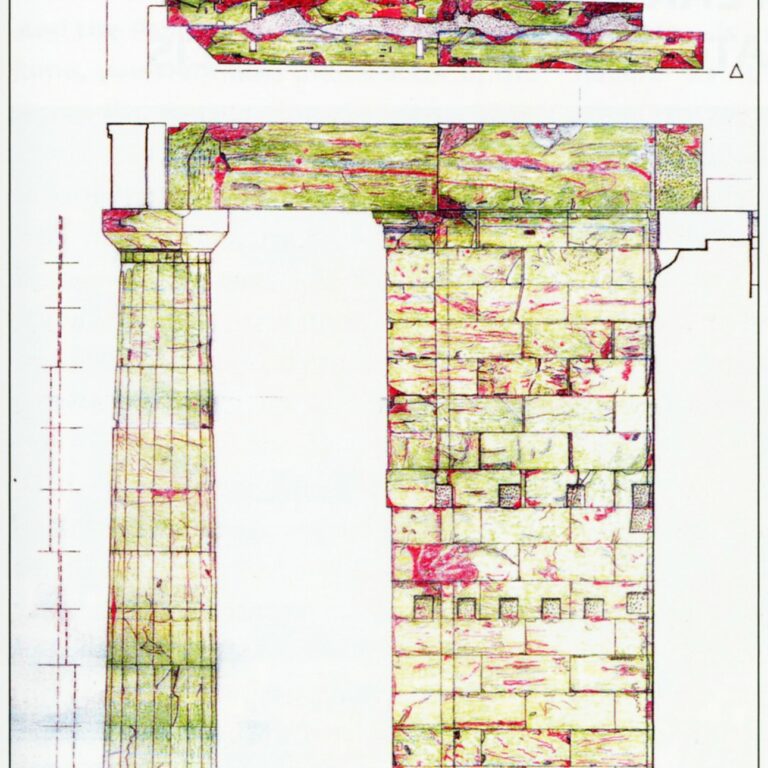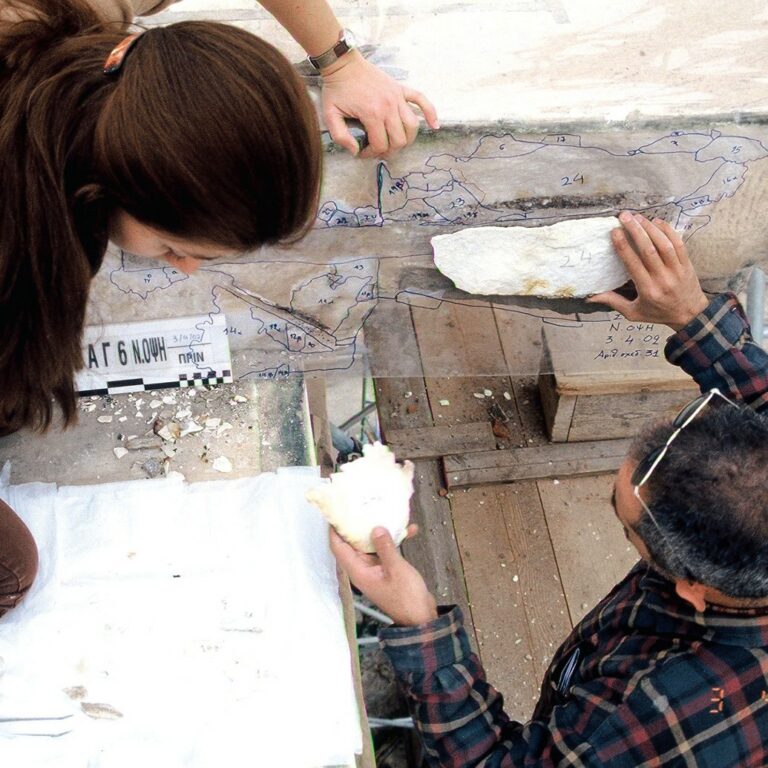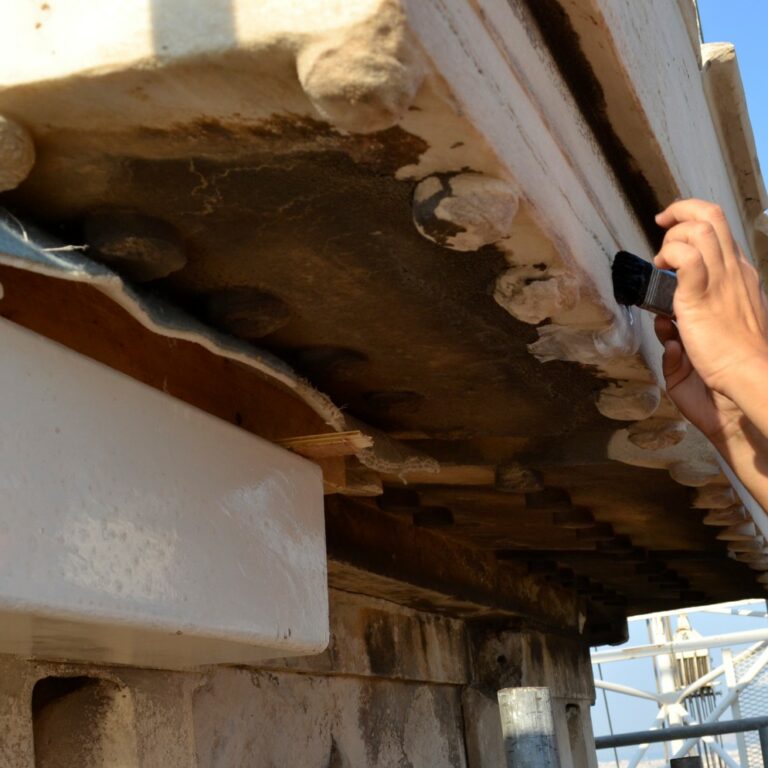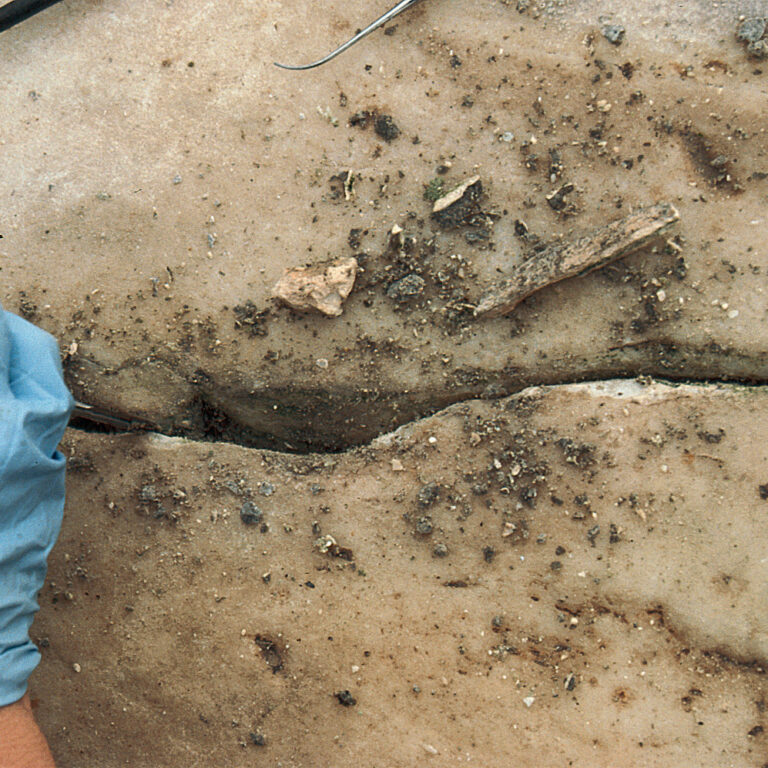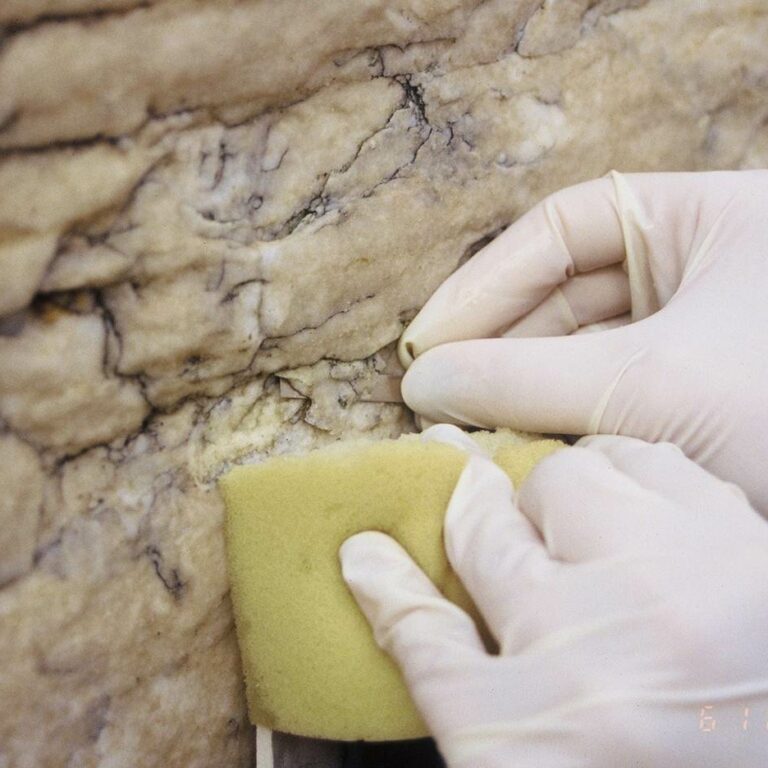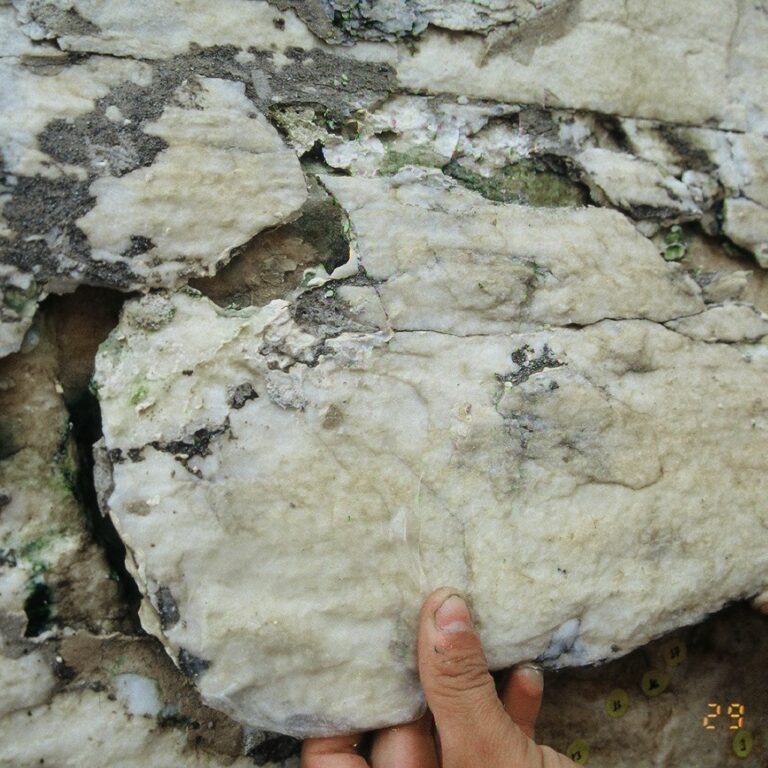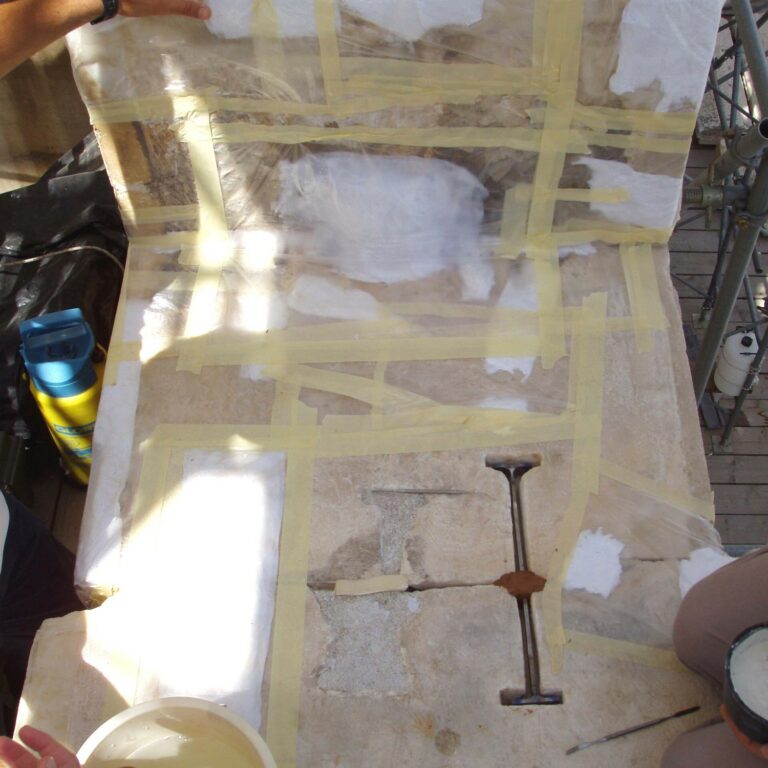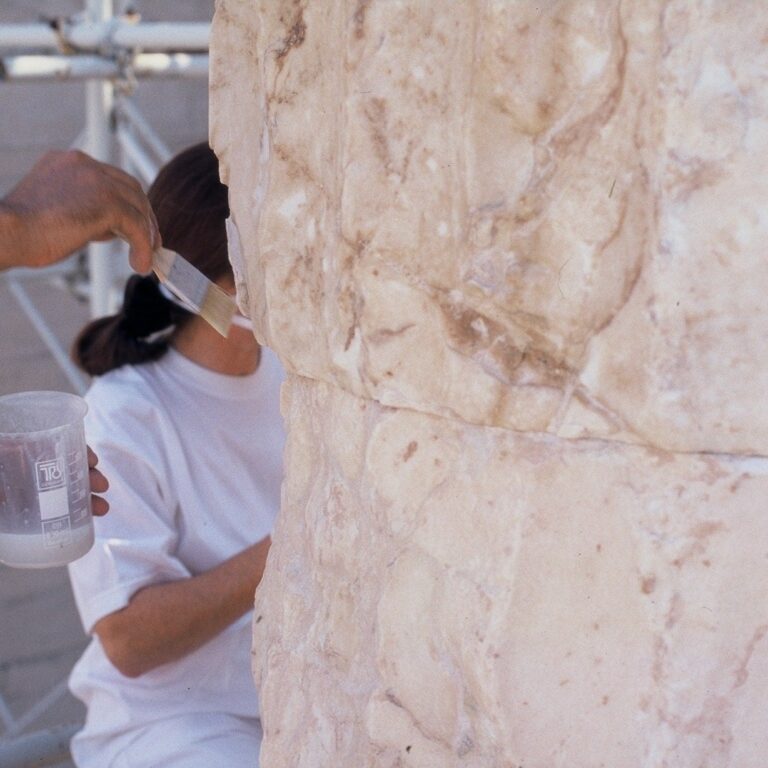The interventions focus on the development of methods for the prevention and suspension of the causes and mechanisms of deterioration of the stone. In the framework of the passive conservation, the most sensitive parts of the sculptural decoration were removed from the monuments for their protection and are exhibited since in the Acropolis Museum (the Karyatides from Erechtheion, the metopes of the east side, the west frieze and the pedimental scultures of the Parthenon, the frieze of the temple of Athena Nike).
The interventions have a systematic and rescue character. The conservation program consists of a range of works that may be divided in three main stages: consolidation of the surface, the removal of the causes of deterioration and the restoration.
Documentation of conservation works
All intervention stages and all information identified on morphological and construction elements or earlier interventions are documented. Initially, a comprehensive report assesses the state of the surface that will be maintained and designates the rehabilitation program.
Drawings to scale are prepared tracing the previous operations, the types of wear, other historical traces, the deposits, the coloured surface layers, as well as the whole course of business. All stages are accompanied by photographs, which are archived. The whole procedure is also documented in individual daybooks.
Rescue interventions
Usually they precede the dismantling operations. They include the collection and recording of fragments, the consolidation of the surface and the initial consolidation of areas with erosion, flaking and peeling.
Consolidation
Initially, the surface that has undergone intergranular corrosion or intense weathering is consolidated to slow the phenomenon.
Old plaster removal
After consolidation, older mortars that have failed or have caused cracks and other side-effects are removed by mechanical means. The plaster is not removed in parts of the surface, where they can cause further damage to marble.
Nail removal
The corroded iron or bronze pins that were placed to withhold broken fragments during earlier conservation interventions are removed and replaced, where necessary, with titanium. The pin removal system has been developed by the marble technicians.
Rust removal
Removing rust stains from corroded connectors is achieved by a neutralized thioglycolic acid solution.
Crack cleaning
Cleaning of cracks, gaps and internal fracture surfaces aims at the removal of loose fragments, particles and microorganisms.
Dismantling and joining stone fragments
For fragments that are collapsing or remain deformed on the surface, the possibility of detachment is examined on a case by case basis and according to position. Basic criteria are the preservation of the material and the non-alteration of the geometry of the surface during reassambly. Where greater support is required (for larger fragments) invisible titanium pins are selectively placed. Their sizing is calculated by a designated civil engineer. For smaller fragments a mechanically weaker cement with the addition of lime mortar is used.
Inlay of hinges
The sealing of the joints is the final phase of the conservation works aiming to prevent the entry of solid particles, ensure the runoff of rainwater and provide an aesthetic finish to the intervention.
Protection
In order to protect the sculptures, they are transferred to the Acropolis museum. The surfaces of the monuments that remain exposed to air pollution have to be coated by a protective material that will inhibit the sulphation process and protect the surface as well as the conservation intervention materials meeting the requirements for reversibility and compatibility with the original marble.
After a long research project, conducted in the laboratory of Material Science and Engineering by Prof. T. Skoulikidis, a material based on n-semiconductors was advanced. These are metal oxides that acquire semiconducting properties when prepared electrolytically. Their action is based on the inhibition of sulphation. Among many such oxides tested, the aluminum oxide with a reversible polymer body proved to be the most effective. The composition of the material is a methyl methacrylate body in toluene 10% with the addition of electrolytically prepared aluminum oxide (Al2O3), which is the component with the properties of n-semiconductor. The n-semiconductor, beyond the protection of the marble, protects the body from UV radiation and aging. This material has been applied on a column of the Propylaea and an inscription on the plateau of the Acropolis.
Artificial patina
To reduce the color contrast of the new marble complements, an artificial patina can be applied on selected occasions. The material consists of methyl methacrylate body with 10% in toluene, prepared electrolytically by adding iron oxide and mineral pigments.
[print-me target=".entry-title, .breadcrumbs, .content" do_not_print=".gallery-shortcode, .vc_btn3-container"]
